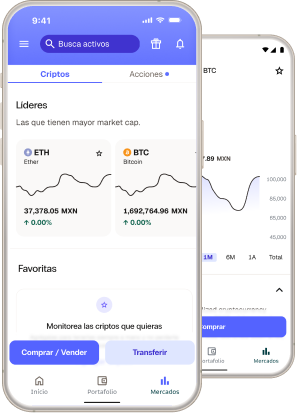Forget the price, trust the metrics
We all care about price. When you go shopping, you know how to assess whether something is “cheap” or “expensive.” However, when we talk about investments and you want to invest in crypto, this instinct may not be so obvious or clear.
Price matters, but it’s not the only thing. A token being worth fractions of a dollar does not guarantee it will go up, and Bitcoin being worth a lot does not mean it cannot grow further. That is why it is necessary to base your strategy on solid, reliable metrics.
In this guide, we explain the seven most important crypto metrics that will turn you into a more confident and prepared investor.
The investor’s tool set: 7 essential metrics
There are seven main crypto metrics you must master to understand the market’s behavior and reliability:
- Market capitalization
- 24-hour volume
- Ranking
- Circulating supply
- Total supply
- All-Time High (ATH)
- Total Value Locked (TVL)
Market capitalization (Market Cap)
In the traditional stock market, market capitalization defines how much a company is worth. In the crypto world, it works the same way: it refers to the total value of an asset in US dollars.
To calculate it, simply multiply the asset’s circulating supply by its current price per unit.
Example: If an asset is worth $200 USD and there are 2 million in circulation, its market cap is $400 million USD.
This metric is dynamic; if the price goes up, the capitalization goes up.
24-hour volume
This metric refers to the total amount of tokens that have been bought and sold on exchanges over the last 24 hours. It is a key indicator for understanding an asset’s popularity and liquidity.
In this case, high volume indicates that the asset is in high demand and is less prone to sudden price fluctuations. Low volume may signal that the price can be more easily manipulated.
Ranking
Just as there are rankings for the most valuable companies, there are rankings for cryptocurrencies and tokens. Although the factors vary, for cryptos, the ones mostly considered are: Market capitalization and 24-hour volume.
This combination provides a clear picture of the confidence in an asset and is ranked in relation to the rest of the ecosystem.
Total supply vs. Circulating supply
Total supply is the quantity of units known to exist for an asset. Some have a maximum supply already defined (like Bitcoin, which will always be 21 million).
The circulating supply is the estimate of tokens actively in the hands of the public and available for trading. Tokens that are not in circulation are those that are locked or that have been lost.
The circulating supply is the most realistic metric for calculating market capitalization because it only considers the assets that are actually in play.
All-Time High (ATH)
The All-Time High (ATH) refers to the highest price an asset unit has reached since its creation.
This metric is more of a “vanity metric” than a decision factor. A past ATH does not guarantee a future ATH. Don’t let the excitement of a past record cloud your future strategy, but it is worth knowing and being aware of the reach an asset has had.
Total Value Locked (TVL)
Total Value Locked (TVL) is a key metric for Decentralized Finance or DeFi protocols; these protocols generally allow staking.
So, the total value locked is the amount of tokens that people have “locked” or “deposited” into the protocol to provide liquidity and security, in exchange for returns.
It is an important metric for two reasons:
- Attractiveness: It shows how appealing the protocol is for generating passive income or for being used in governance. People who trust a project lock their tokens, they don’t sell them.
- Price Reliability: A high TVL usually indicates that the token’s price is more reliable and stable, as much of the supply is immobilized.
Take control! Master your decisions with Bitso
With these metrics, you no longer have to guess whether an asset is a good investment. You have the knowledge to take control.Your investment journey begins with knowledge: Open or download your Bitso app today to start investing in crypto and put these metrics to work in your portfolio.


